Memories of a Stuka Pilot
Created 10 February 2014
|
Taken from an email I received on 10 Feb 2014 apparently scanned using OCR, from an original as there are a few mistakes. I added the images myself - these memories are from two people given in an address to an American college. In the text are questions and answers. I have only printed here the operational memories.
(right) Stuka from Geschwader Immelmann over Eastern Front
|
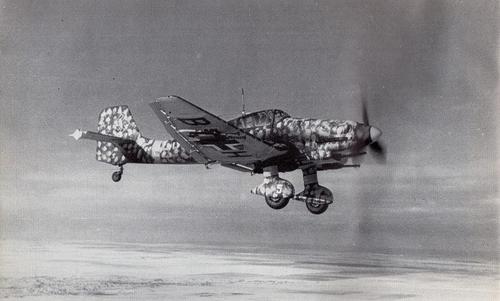 |
| My first contact with the Stuka, the JU-87, began at the end of November 1938, when I was promoted to Stuka captain, to squadron captain, as we say in Germany. This is the level of a company commandant of a company the first Staffel of I Stuka 1 in Eest Prussia. This group had been formed from the HS-123 group, which was a one-seater. It was the first aircraft in Germany which began to dive, but it was not the type we needed. The right type was the JU-87. Since a commander of that Stuka Gruppe had not yet been appointed, I was to take over the commend for the present. Having taken over the Gruppe at its operational airport An Silesia, I ferried it, with all planes, across the "Polish Corridor", separating East Prussia from the rest of the Reich as a result of the Versailles Treaty. We touched down on Insterburg air base, the place where I had previously served as a reconnaissance pilot. Now the "cold homeland" had me again, a region X had come to like very much because of the charm of its scenery. Here a new task waited for us. We were to transform our Gruppe into a real Sturzkampfflieger Gruppe flying JU-87Bs. We were informed that the first Gruppe of JU-87 dive bombers would be ready to be picked up from the district air base* in the Reich. Having handed over our HS-123s, we received our brand-new Stukas which made a most martial impression on us. We first concerned ourselves with the details of instrumentation and with the hydraulic system, especially developed for dive bombing, finally with the bomb release. After a few short briefing flights the crews soon felt at ease in their closed cabins. We still had to learn how to control the JU-87 in nose-diving. There existed no Stuka school at that time, but there was the Barth air base in Pomerania where a Stuka training Gruppe was being built up within the Luftwaffe's training wing. The instructors first had to get familiar, in test flights, with tne new weapon before they could pass on their experience and skill to the other Stuka Gruppe. We, therefore, helped ourselves as well as we could. We first singled out the crews. The pilot and his backseater, the latter also acting as gunner, had to be a real team; one that had to depend on each other, for better or for worse. Hence, each pilot chose his backseater. If after awhile it was found that the two did not harmonize, the men were replaced until pilots and their backseaters had found themselves. Some of the crews stuck—or crashed—together throughout the war. |
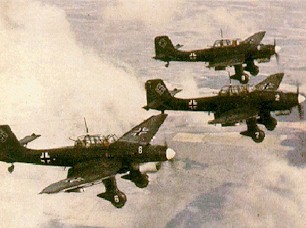 |
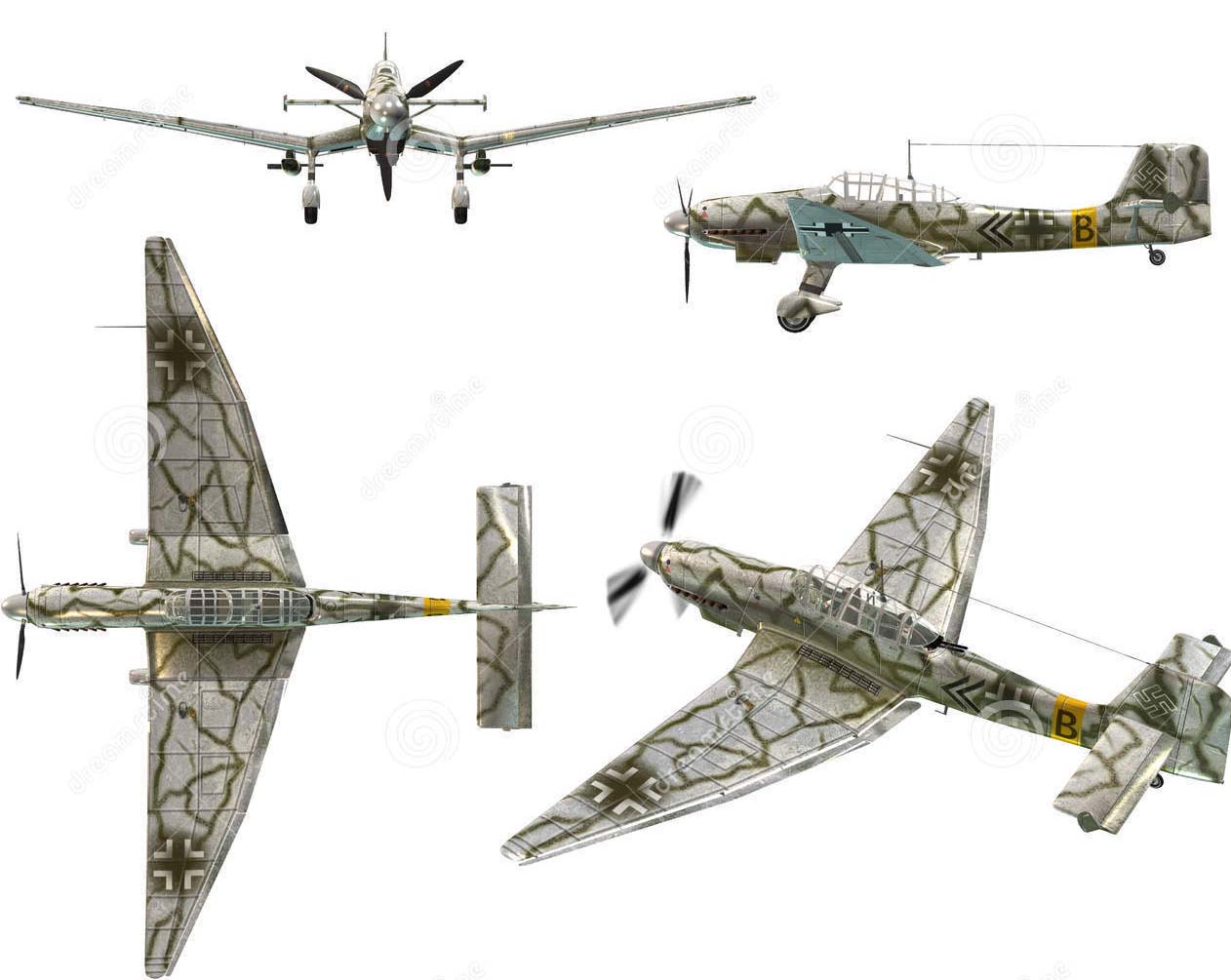 |
As for myself, I can say that my backseater and I have remained friends to this very day. After all our pilots had got used to the JU-87 and learned to have complete command of the plane in starting and landing operations, we practiced diving. In the vast forest regions around Insterburg a bombing ground with target cross and spotting tower was soon installed for us. We approached our target at an altitude of 5000 meters, extended the hydraulic speed brakes shortly before the target, then making the target move into the bottom window in the cockpit below our feet. When it disappeared at the back edge, we turned the plane down at a dive angle of 70 degrees. With the gas shut off, the plane quickly gained speed by its own weight, whilst the diving brakes kept it at a steady pace of 450 kms/hr. We aimed through a reflector sight keeping the whole plane in the center of the target and allowing for velocity and direction of the wind, with the aid of the right lead angles. A continuously adjustable red marking arrow was mounted on the altimeter, set to local altitude above mean sea level, whereby the required bomb releasing altitude could be set. When passing that altitude in the dive, a loud and clear horn signal was sounded, warning the pilot to press the bomb releasing button on the control stick and to pull out the plane. By pressing the releasing button, we also automatically actuated the hydraulic recovery device which aided the pilot, under the heavy G-load encountered in steep dive recoveries, in pulling out of the dive. The normal bomb releasing altitude was close to 700 meters. Experienced pilots would also venture down to 500 meters in order to increase the bombing accuracy. This, however, was the absolute minimum pulling out radius to clear the ground in time. Below that there was no hope left as shown by the sadly remembered Stuka disaster of Neuhammer where a practically complete JU-87 Staffel crashed into the ground because of late recovery. After we had obtained some mastery in diving the JU-87, we practiced dive bombing during dives; first with cement bombs, finally with live ammunition until we found our bombing accuracy was satisfactory. This meant that our bombs had to be within the 10-meter circle. A high bombing accuracy in diving was, in fact, the criterion of the Stuka weapon as compared to bomb dropping over wider areas from level bombing. The Stukas were, therefore, predestined for fighting pinpoint targets, preferably hangars, aircraft boxes, barracks, arms and ammunition factories in the enemy's back country; also bunker lines, artillery positions, tanks on the battlefield, and the like. Diving with and without bombs was part of our daily routine. Besides, we also began our unit training in Staffeln, as combat flying practice with the whole Gruppe. We drilled after the model of the Schleissheim Fighter Training School, going through the whole fighting program described before. This increased the maneuverability of our pilots. They had to become part of the plane. This included starts and landings on short, bumpy emergency airfields. Occasional crash landings could not be avoided. This preliminary training provided experience useful in anticipation of risky landings in unknown regions in the following war. That training phase was followed by combat fighting practice in squadron units and in given tactical situations as were to be encountered in wartime. This included directing the crews to the target, briefing them about weather conditions, the cround and the air situations, AA emplacements, replenishment of ammunition, fuse setting, the way of taking off—single or in formation—starting order, unit leader, code designations, forming-up altitude, approach route, approach altitude, signal of attack, direction of departure, forming-up during return flights, altitude of return flight, landing order, subsequent discussion, preparation for new sorties. In this way we welded our Gruppe—now renamed I/Stukageschwader 1—into a unit always ready for action. |
|
In between, I was assigned, in rotation with the two other Staffel-kapitaenen - to the Stuka training Gruppe of Barth, in order to exchange our experiences with the Barth commander and his captains and to evaluate them in practice. .This was done by lessons, and by flying in tactical situations, with extensive air moves within the Staffel unit. All Stuka commanders and captains were thus steered through the Barth training lessons with a view to reducing to one common denominator the entire Stuka arm, increased to 11 Grupper in the course of the year. In the summer of 1939 the political situation deteriorated. The mission with Poland kept on increasing. Dark clouds gathered at the horizon. In anticipation of an armed conflict with Poland, I/Stuka 1 was given an important order from general headquarters. We were to protect in combined action with an engineer unit of Oberst Medem, Elbing the Polish bridgehead of the large railroad bridge across the Vistula near Dirschau, against destruction by the Poles, To this end the five blasting installations at Dirschau railroad station—reconnoitered by our forces—and the firing wires on the bridgehead were to be deactivated. Oberst Medem would at the same time advance with his engineers in an armored train from the Marienburg area in order to destroy the explosive charges. The combined action by Stukas and engineers was to be a surprise attack, giving the Poles no time to blow up the bridge. This was the reason why the attack was planned at three minutes before the beginning of the general Wehrmacht offensive, viz., on 1 September, at 0442 hours. The operation had to be most carefully prepared to be successful. We received detailed data of the targets and could thus pass on our orders to the crews. Everyone was fully acquainted with his target. |
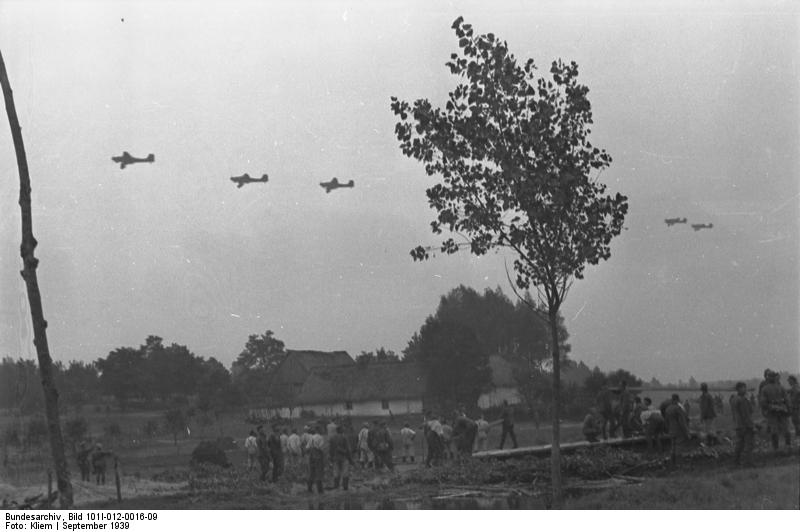 |
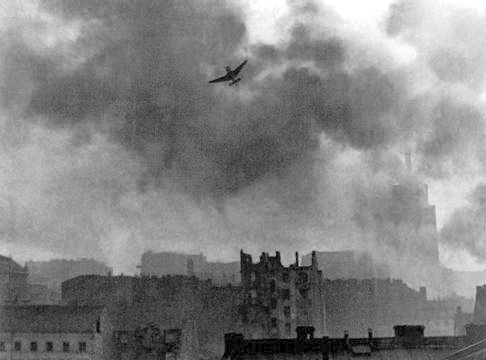 Warsaw 1944 - The Uprising |
On 1 September 1939, at 0425 hours, I/Stuka 1 started from its jumping-off base, Elbingen, for its first sortie with 45 JU-87s. The approach to the Vistula bridge lasted just under 15 minutes. Weather conditions were unfavorable, with a visibility of 1 km only and a practically closed fog layer at 50-meter altitude. It was planned to destroy with two Ketten (six planes) in low-level flight the lead wires running along the railroad embankment to the bridge, then to blast the detonators in Dirschau railroad station by the mass of the Gruppe, in a dive bombing attack. Much depended on how the weather would develop at the target point within the next 15 minutes. The latest weather report given out by a German observation post on the west bank of the river told us that the target was almost completely covered with a fog layer which had a slight tendency of breaking up. It was therefore doubtful whether we could, after all, make the planned high-altitude attack. Time pressed. We decided to climb through the fog layer so as to be able to form up the Gruppe which, in view of the small range of vision, we could not have done below the clouds. Above the clouds there was sunshine, below us we saw a widespread layer of fluffy clouds extending toward the target area. Through small loopholes in the clouds we could see the ground. Considering this situation we had no choice but to push down again through the openings in the clouds, in successive flight formations, for a low-level attack by the whole Gruppe. This would, of course, reduce our bombing accuracy considerably. The mere thought of it did not make me feel too easy. When forcing down we unfortunately suffered the first loss of one of our crews by a crash fire. The plane, having pierced the clouds in blind flying, had struck a hill. We were just passing that place again when we saw the six planer having started immediately behind us and which had been ordered to fly the low-level attack against the railroad embankment, disappearing in the haze. Visibility had slightly improved. The Ketten could join up behind me. When we flew across the Nogat River near Marienburg, still in low-level flight, the weather changed miraculously. It cleared up, we gained in altitude and caught sight of the bridge. Below me, on the double-track railroad line Marienburg- Dirschau, I caught sight of an armored train and a freight train, both steaming along in parallel, at high speed in the direction of the bridge. It was Oberst Medem with his engineers. Having meanwhile climbed to an altitude of 2000 meters, we approached our target from east to west, exactly above the Vistula bridge. Below us, half left, our brave Oberleutnant Dilley, Staffelkapitaen of the 3rd Staffel, swung on with his two Ketten from the south, then hedgehopped in the direction of the railroad embankment. While nosediving we saw him rushing through below us. We observed his six exploding 50U-kg bombs tearing up the railroad embankment on the Polish bridgehead. Then—while pulling up— we watched the rising mushroom-shaped explosions from our own bombs which had apparently hit their targets. |
| The bridge had remained intact. I dismissed my Staffeln to a new operational airfield in the south of East Prussia. I myself stayed near the target in order to observe further developments on the ground. Much to my consternation I noticed that Oberst Medem's trains had not succeeded in advancing to the bridge. The surprise attack had failed. Obviously the Poles had smelled a rat. They had, after the last train had passed the bridge during the night, barricaded the access to their bridgehead, brought antitank guns into position behind it and had waited there in ambush. When the engineers in their two trains steamed toward the bridge at high speed the Poles fired at the locomotives, setting them afire. Thus they brought the attack to a halt. .'. ater on we learned that a combat ensued which lasted for hours. This gave the enemy time to patch up the destroyed blasting installation and firing wires. Then, roughly four hours after our air attack, the Poles succeeded in blowing up the bridge after all. Our well-planned operation had been in vain. But how did the Poles know of our intentions? It resulted from subsequent interrogations they had no definite information but had simply suspected an attack. A ridiculous omission on the Carman side was responsible for the failure of the operation. It had been customary with the German and Polish railroad personnel on duty to wish each other "good night" after the last scheduled train had passed, via the railroad telephones installed at both sides of the river. They had known one another for years. In the night from 31 August to 1 September there was no such call from the German side. When the Polish personnel tried to ring up their German colleagues, the line was "dead". The Germans had switched it off. In view of the extremely tense situation this was a danger signal, and the Poles acted accordingly. |
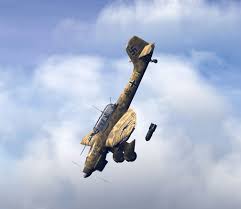 |
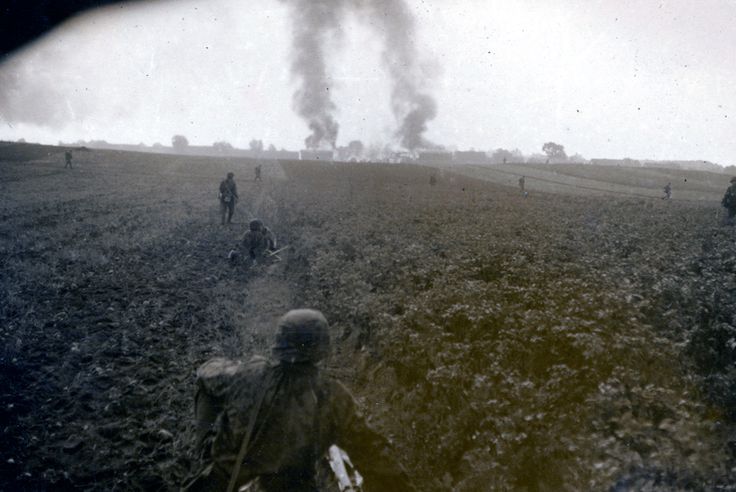 Mlawa |
Now I will present you with a sortie of my group against a fortification line which prevented the first German call to break through and take the city of Mlawa in North Poland. Two days later, 2 September, I was called up by the Chief of Staff, Territorial Air Command, East Prussia, Oberst Holle, my former Anklam Commander who declared to me that the attack of the I Army Crops against Mlawa had been held up by the bunker lines in front of the town. I was to take up contact in the evening of the same day with the Chief of Staff of the Army Corps to discuss with him the question of close air support by my Gruppe. On reporting there I was received rather ungraciously. The Chief was obviously irritated by my subaltern rank, setting little hopes in discussions with an Oberleutnant of the Luftwaffe. I was shown an aerial photograph of the fortifications in which I could recognize a long line of smaller and larger bunkers. I stated that we, as Stuka fighters, were specialized in such pinpoint targets and that I thought we could clear the way for Corps I, by three attacks with 40 planes each, each plane loaded with a 500-kg bomb. The faces of the Commanding General and of his Chief brightened. We then fixed the time of the attack in three different operations. At the same time I entreated both officers not to start their own attack before the sorties were completed, to prevent us from dropping bombs on our own troops. Having rushed back to the air base about midnight, I reviewed the action planned against the bunkers with my comrades. Early in the morning of 3 September the weather was clear. Forty minutes after our take-off for the first attack we found ourselves above the target at an altitude of 4000 meters. We nose dived, then released the bombs at altitudes between 700 and 500 meters for better bombing accuracy. We were over level country without any ground obstructions. This enabled us to descend to such a low altitude. As far as I could observe, we scored a number of close hits. Then we returned, refueled, bombed up, and started for the second attack. The same results. Ready for the third attack. I was about to take off when the starting sentry, with a telephone receiver in one hand, raised the red flag. At the other end was the Chief of Corps. "Do not start. Troops about to attack. Great success. We thank you." Well then. As we later learned, we had made some direct hits. Even our close hits, having shaken the bunkers, had put the gunners out of action. This was to show you it is possible with such a Stuka group to make a Corps, which was prevented to break through, to break through a bunker line. |
| This Mlawa operation just to the south of East Prussia was particularly interesting. The Germans got themselves very badly bogged down in front of the Mlawa fortifications. There was some kind of a loss of nerve and loss of some kind of aggressive development among the ground forces. Generically what happened, and that is why this operation is particularly important, is that the Stukas, and it was mentioned that there were 120 planes in this flight, were literally the weapons that were responsible for the breakthrough of the Mlawa fortification. This is a rare generalization. In almost every place in the campaign in the Second World War the ground forces got a lot of support from air, but it is a very rare case when you can really credit air for being responsible for decisive action on the ground—really completely responsible. And the Mlawa operation I think is one of the few cases where after the ground forces had failed, the Stukas came in for a short but very intense bombing, 120 of these aircraft coming in, in a short period of time. These aircraft were literally responsible for the breakthrough at that point. This generalization is hard to make. You can support your local air force as much as you want, but it is very hard to say that the air force is going to be decisive, especially in pretty tough ground action. But I chink the generalization—and what is important about this is that the air force, the Luftwaffe, in that short series of operations actually opened up the Mlawa fortifications. When General Hozzel said, for example, that he got the congratulations from the Corps, I do not think he said it quite strong enough. The Corps was saying, "You allowed us to break through; you were responsible for that breakthrough". You cannot find very many cases like that. But that is at least one if somebody is looking for certain types of ammunition relative to air forces and what they can buy for you. |
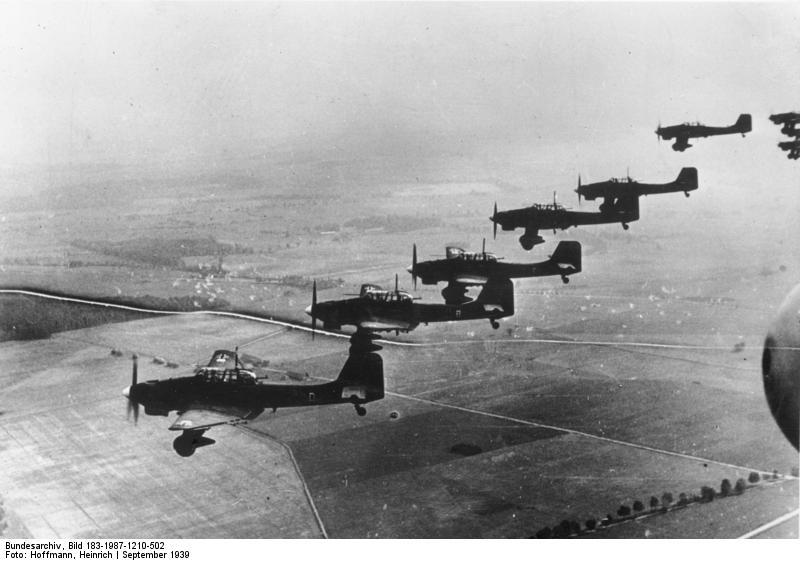 |
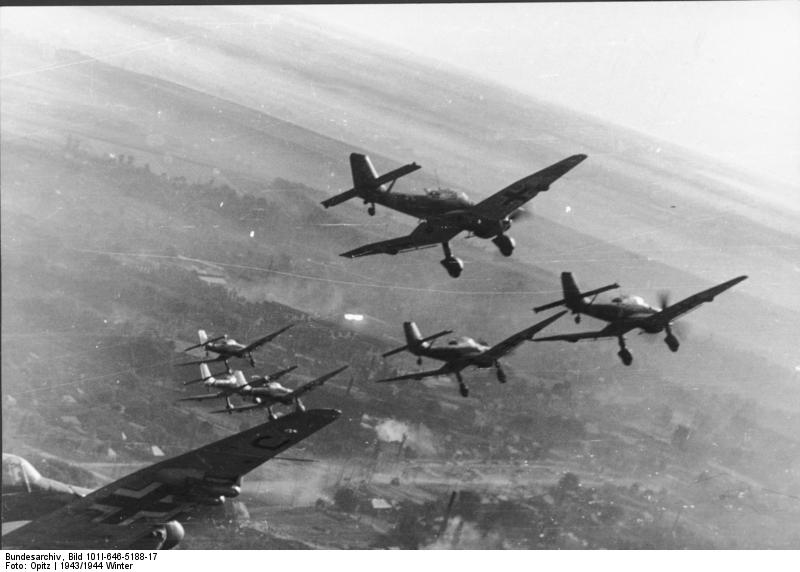 |
After Poland, there was some time of interludes. I will report about changing our series of JU-87s. This happened in about March 1940. I was called to the air base of Goettingen. After we had landed, I reported to the commander of the Regional Aircraft Park, a logistic unit where all technical equipment, from the spanner to the complete plane is sorted, maintained, and held available for delivery. The commander handed me an order of the Luftwaffe High Command, informing me that I/Stuka 1 was to exchange all of its JU-87s at the Park for a new series of the same plane type, then transfer these to Delmenhorst-Bremen air base. When the hangar doors were opened we saw, greatly amazed, 50 brand new JU-87s lined up for us. They differed from our old planes in that they were equipped with an additional fuel tank below the wings. The tanks, having about the size of a 1,000-kg bomb, had a capacity of 300 liters each. This meant an increase of the operating radius by 100 percent, with, a flying time of roughly six hours. What were they going to do with us? Where would be bound for? What came up was the campaign in Norway. I will report about this campaign and given two examples of sorties in which we were involved. I will report about an attack against a British bridgehead at Namsos. This is north of Trondheim. We were coming up from Oslo having helped a German infantry division. Taking up a northern direction to Trondheim, we were called up to Trondheim air base. Hardly had we landed at Trondheim when the first operational order was issued, one hour after our landing. The British had gained a footing in Namsos, north of Trondheim. They were supplied by transport ships passing through the deep cut along Namsos Fjord with Namsos port located at its end. There the transports were discharged under the guard of warships. The I/Stuka 1 was then the only available operational unit to be put into action against the British base and its supply vessels. The following day we fully concentrated on those targets. With the exception of the first Staffel, the mass of our pilots were not experienced in dive bombing attacks against moving marine targets. During our first sorties many a bomb missed its target but soon we learned it. We finally succeeded in sinking several transports on the high sea and inside the Fjord. We then attacked the small cruiser which had annoyed us all the time with its fire. We flew a number of feint attacks until the cruiser had apparently used up most of its ammunition. Then we attacked with the whole Gruppe, sinking it by two direct hits. As we learned later, it was the 4,500-ton torpedo cruiser "Mogador". |
|
On the morning of 3 May we made an astounding discovery. The British, having left Namsos at night, were said to be on the high sea, returning to England under strong protection of escort vessels. The idea suggested itself to pursue and attack them. A contact plane was close to the enemy, a pilot plane guided us to the target area in the same way as on our recent operation started from the Holtenau base. As a naval patrol plane had reported, the formation consisted of one battleship, one cruiser, several destroyers, and a number of transports, one of them 14,000 or 15,000 tons. The convoy was, by now, about 300 kms away from the Norwegian coast. It would thus take two more hours before we could attack it. We were given quite a tall order, considering that we had to fly in single-engine land planes without radio navigation aids over a total distance of 700 kms across the open sea. In case of engine failure, the crew could hardly be expected to survive. We had, true enough, a rubber boat on board but would hardly be able to make use of it as, with our fixed landing gear, our plane on touching down would inevitably nose- over and sink with the crew at once. Flying at an altitude of 4,000 meters we spotted the convoy after 90 minutes and found it as described by the observer plane. Both planes were manned with four experienced naval officers who could now witness the exciting battle—to begin instantly—away from the AA fire as if they were seated in a theater. I myself picked out the most lucrative targets, the battleship, the cruiser, and the largest transport. By radiophone I allotted the remaining targets to the three Staffeln, diving myself on the battleship with the Stabskette (staff flight) and the 1st Staffel. Even before we were directly above the naval formation we met with the fire from all barrels, as we had never experienced before. While we dived through a dense barrage of fire furiously spitting against us from below, we aimed and relased the 500-kg bombs at an altitude of 500 ms, with their armor-piercing heads. Every pilot was guided by the hits scored by the plane in front of him and had to adjust his point of aim accordingly. The first six bombs failed their target; the seventh hit the forecastle of the second front turret. When I was about to pull up, having just reached an altitude of 1,000 meters, a vehement explosion blast threw my plane up so strongly that my head was flung against the cabin roof. For a moment I felt stunned. When looking down again, I saw the battleship had disappeared under a dense cloud of smoke. |
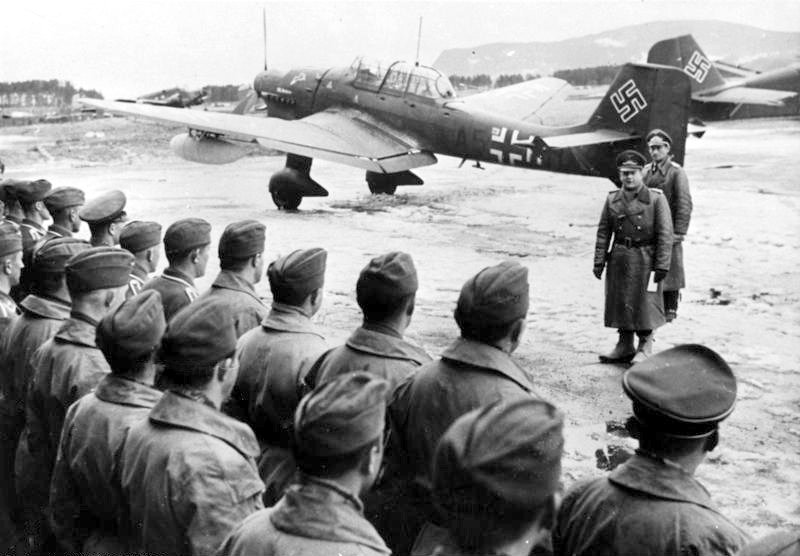 |
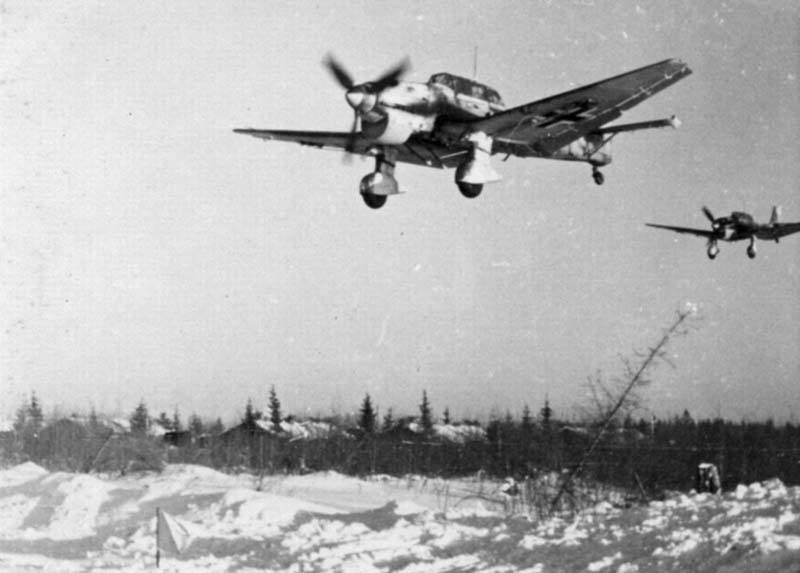 |
The cruiser and the transport vessel were sinking. All this happened within a few minutes. It was high time for us to break off. We had lost sight of our two HE-111 planes. In the haze of the battlefield they had lost sight contact with us. We flew alone again. I joined the group for our return flight in an eastern direction. All we had lost were two crews. However bitter the loss of each single comrade was to us every time, we had survived the fireworks fairly well, not to speak of our success. We flew at low level above the waves in the direction of the Norwegian coast. Somehow, a happy feeling came up between the crews. Pressing the button of the radiophone I heard my men singing. They sang the song of the Navy because all of us felt so close to the sea now. "Wir sind Kameraden auf See" (We are comrades at sea). Thus the tension of this strenuous operation relaxed. I still had to guide all of them safely back to our home base. I did not know how far we had been displaced to the north or to the south by the wind. By comparing the map with the coastline, I hoped I could make out whether Trondheim was north or south of the point where we would reach the coast. I was lucky. We sighted land north of Namsos, turned south, then landed safely on our planked runway in Vaernaes. We were received there with great rejoicing about our success which had hurried ahead of us by the radio report of reconnaissance aircraft. This, however, did not restrain the Chief Pilot from launching us for a second sortie against the convoy. The "Wooden Cross" of the Iron Cross" was his device when he dismissed us for the new combat mission. We, however, never saw our target again. The enemy had eluded us after so many hours had elapsed after our attack. I had to break off our second mission as I had to guide my Gruppe safely back before nightfall. The following day all pilots and gunners of I/Stuka 1 were solemnly awarded the Iron Cross First Class for their engagement. |
| After this Norwegian campaign of which I have reported two sorties, I will switch over to the last phase of the campaign in France. From Norway we transferred from one day to another to Evreux about 120 kms west northwest of Paris. On arriving above the area said to be our "landing grounds" ail we could see below us was a grain field in the midst of hedgerows and shrubs. We could not discover any landing strip. On looking more closely, we recognized some excellently camouflaged planes under the shrubs, r number of JU-87s. We had reached our destination. Now a landing cross was placed on the grain blades as in invitation to land. This was new to us. We never had landed on a grain field before but managed it quite well. The braking effect of the blades made us roll to a stop more quickly. On the other hand; we needed more time for the take-off. We were put under the command of General von Richthofen of the Eighth Air Corps. I had not met him personally before but was to meet him soon. While we refueled, the order was given for the attack against the mole forts of the naval port of Cherbourg. The forts, with their heavy zone fire, guarded the city against the German troops at its western periphery. Having loaded our 500-kg bombs fitted with armor-piercing heads, we took off. As we had received aerial photos of our target, I could allot the targets before our start. Near Caen we took course for the Seine Bay, flying at an altitude of 4,000 meters, then while sighting the coast we headed for the port of Cherbourg. Halfway to our target we noticed a large warship moving parallel to the coast, obviously ready to intervene in ground fighting with sweeping fire. We regarded it as an enemy ship because we had not been notified of the presence of German units in that Channel area. The Staffelkapitaene called me by radiophone. "A warship, isn't it? Quite a fine catch. Wouldn't it be better to crack that one than those forts?" It was a most tempting thought. The "steamer" down there kept quiet—did not fire. It was like a challenge, but I was bound by my orders. I followed my intuition and continued on my course to Cherbourg. I could well imagine that many an officer flying behind me must have shaken his head. Our operation was a great success. After a classical dive bombing attack on the forts, the enemy fire was silent; Cherbourg was stormed and captured. When, later on, I reported to the Chief of the Corps my moral dilemma about the battleship, his laconic answer was, "You surely would have had to face a court-martial". This operation was followed by a few more close-air supports, then France capitulated. |
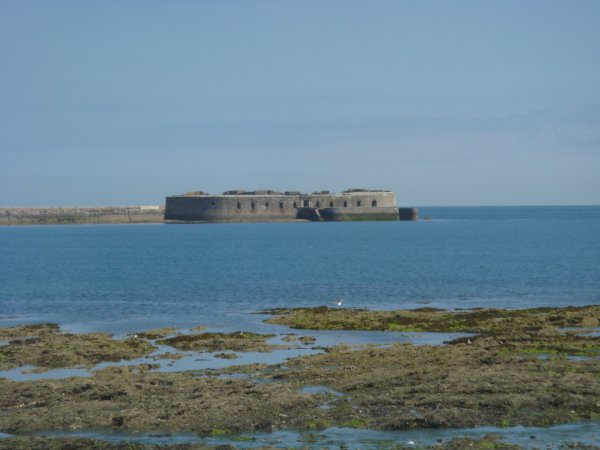 |
 |
I was not involved with
this phase of the war in France, but I heard of it. I cannot say
anything other than I have read about this. You know, Colonel, that the
English 300,000 man corps had their back to the sea at that time. It is
a miracle that they could escape. Up to now nobody has understood it. I
remember that Reichsmarshal Goering at the time had promised that he
could destroy the bridgehead of the English alone with the Air Force,
without involving the Army in this operation. It did not work because of
the weather situation as you perhaps know. The English could escape
because there was a period of three days of bad weather. So I think that
the calculation of the real situation was mistaken. It was an error of
the Supreme Command of the Luftwaffe. The Army could not proceed. It was
forbidden by the Supreme Commander of the German Wehrmacht. This was
Hitler. There was another idea I may report. Hitler had a special
feeling toward the United Kingdom, to the British Empire. He loved it.
Maybe it was in gesture to Churchill, "Here you have your 300,000 men.
Make freedom and peace." This is an idea; it has never been proved,
although possible. This may explain why we attacked Poland after we had
taken Czechoslovakia. Hitler did not imagine that England at any time
would enter the war between Germany and Poland and make a broad war out
of this. He had not believed it. Otherwise he would never have done it. |
|
The first strategic operation in the history of aerial warfare, the Battle of England, began with the keyword "Eagle's Day 13 August". I/Stuka 1, jointly with II/Stuka 2, was put into combat action against the British fighter base of Filton, about 80 kms north of Warmwell. On the assumption that our attack would come as a complete surprise, we were to hit the "Hurricanes" and "Spitfires" in their boxes before they were given a chance to take off. We, as pinpoint dive bombing specialists, were ready for our targets, but we had not reckoned with what our "host" had in store for us, as will soon be seen. That morning we had taken off, with about 80 JU-87s in Angers, landing in Dinard for our jump off to the coast. Assigned to us as fighter escort for the planned Stuka attack was a Jagdgeschwader (Fighter Wing) 53 under the command of its young Commodore, my successful training comrade, Major Baron von Maltzahn, and a Geschwader (Wing) consisting of twin-engined heavy ME-110 fighters. The participation of the latter in that action was, unfortunately, only of symbolic value because the ME-110s were too clumsy and no match for the British fighter aircraft. Our heavy fighters needed their own fighter escort. We took off; picked up our fighter escort over Guernsey. Then, climbing to an altitude of 4,000 meters, we headed for the enemy. The escort planes were buzzing around us—a comforting feeling. Above the channel the weather was quite clear, but when reaching the English coast we met with a closed layer of clouds which extended over the country as far as we could see, at an altitude of about 3,000 meters. We could not guess the altitude of the cloud cover above the ground, hence, it was impossible to approach our target in clear sight of it. We had no alternative but to continue on our course for another 15 minutes, then to dive blind through the clouds hoping that we would emerge above the target with sufficient freedom of motion. It was a most doubtful assumption, as we should soon realize. All of a sudden our British "comrades" shot up like torpedoes through the clouds, each plane vehemently firing from its eight barrels at our unit now flying in wide open formation. With the 250-kg bomb, visibly suspended from our fuselage, each of our Stuka bomber crews sat, in the literal sense of the word, on a powder keg. Now the first explosions were heard—a sudden fireball—and all was over. |
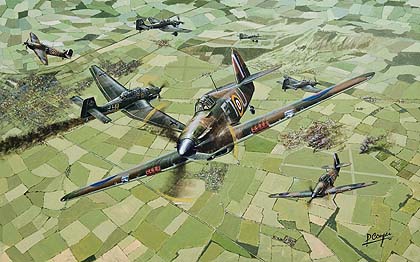 |
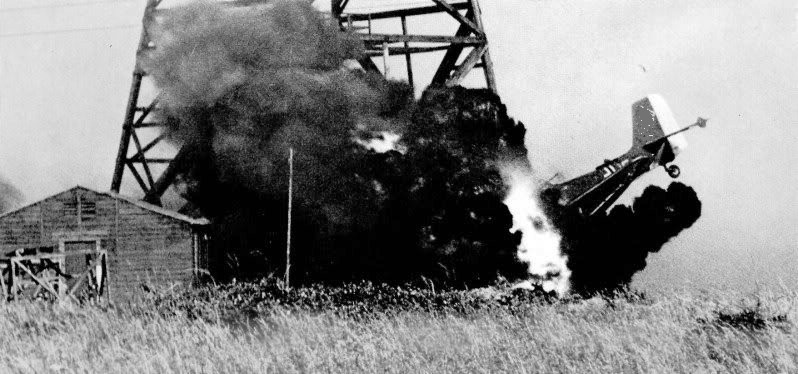 |
Our fighter and destroyer planes dived on the enemy and so tied down a great number of attackers, but many of them were still left to us. We, with our weaker guns and burdened as we were with our bomb loads, were unable to ward them off. We had no choice but to dive down and drop our bombs on the coastal port installations, then to return in a hedgehopping flight across the channel to our home base. Thus we escaped further attacks, if only from below. With difficulty, I was able to assemble my Gruppe, thus increasing our firepower in defense of the British fighters pursuing us. Many a Stuka fell victim to the pursuers in single flight above the Channel. Having landed again in Dinard, we found that both Gruppen had lost about one-third of their planes. The rest of us were pretty heavily damaged by enemy fire. We soon learned that other Stuka Gruppen had met with the same fate that day. The German Command had profoundly erred in judging the strength of the British fighter forces which, at that time, were twice as strong as had been assumed. Our Stuka Gruppen were, all the same, thrown into battle again, twice or even three times, with the result that they suffered further unbearable losses. In the end, reason got the upper hand with the Supreme Command of the Luftwaffe. It was realized that in view of the heavy losses any further Stuka actions against the British Island could not be justified. We were consequently "withdrawn from service" for the time being, so as to allow our heavily decimated forces to rehabilitate in preparation for new operations. |
|
With the Stukas against Britain the situation
was that the Germans were not able to achieve air superiority with the
fighters and the apparent lesson is that when you do not have that air
superiority, what has come out erroneously, is that the Stukas at this
time were chalked off. I think many of you in the audience assume that
roughly after the Battle of Britain, and during most of the Second World
War, the Stuka was an obsolete aircraft and ceased to exist. I think
here the historical lesson is a very sensitive and esoteric thing. I
think that what happened was that when you do not have air superiority,
especially with high-quality fighters like the British had, these types
of attack operations were exceedingly difficult. I think, still, that it
was possible for the Germans with the appropriate tactics to have used
the Stuka somehow or other. What has happened historically is the Stuka
was chalked off after this, and this is an erroneous interpretation of
the war. The Stuka went on later in the war to be the big killer of
ships in the Mediterranean and probably the most effective killer of
ships in the Second World War as a specific weapon system. On the
Eastern front, the Stuka went on after this disastrous experience, which
I think was generically an air superiority experience but not anything
necessarily to do with dive bombing Stukas. On the Eastern front, the
Stuka held its own very comfortably for the rest of the war. The Stuka
was particularly impressive in the Mediterranean against British ships
after the English campaign. The Stukas in the first several attacks were hurt very badly. Now when you look statistically and you spread this thing out in time, I think what the General is saying is that the Stuka losses were more severe than the HE-111 losses. When you spread this thing out in time, Stuka attacks were stopped but the HE-111 attacks went on for a couple more months. When you look at the relative losses that the HE-111 developed over a considerably longer period of time they lost probably as much; possibly even more. So there is a question of time on this thing. There were no single attacks I think in which the HE-111 suffered quite that much, but ultimately they lost just about as many aircraft too. Eventually, they had to be pulled off the operation also, only it took them a couple of months. |
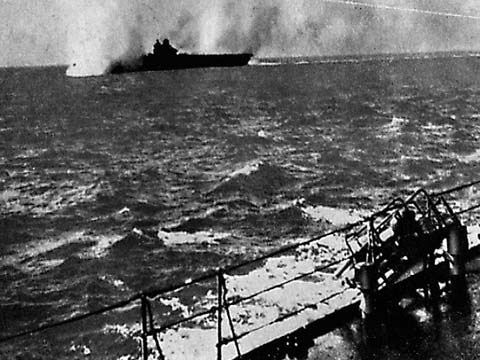 HMS Illustrious under attack in the Med by Stuka |
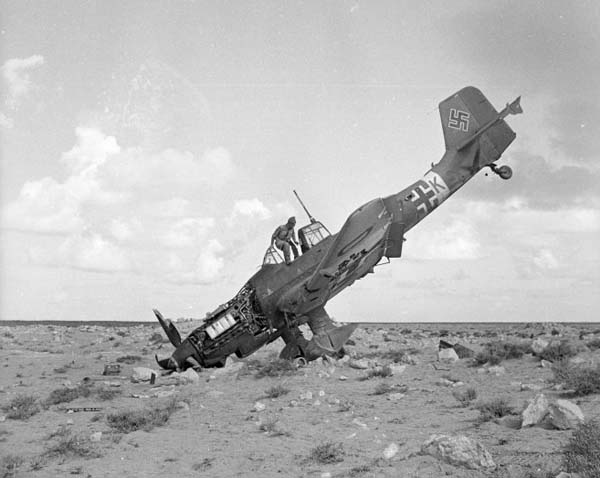 Stuka caught by the Royal Air Force in Egypt. Photograph taken in Sollum by H Paton, 3 December 1942. Original caption reads: A Stuka caught over 8th army ground units by RAF. |
Mediterranean and North Africa. Early in 1941 Stukageschwader 3 landed with about 80 planes of I/Stuka 1 and II/Stuka 2 at Trapani on Sicily where all were placed under the command of the Xth Air Corps; Catania known to us from Norway. On or about 10 January the Geschwader received news that the British aircraft carrier "Illustrious" was bound from Gibraltar for Malta. It was expected to pass in the next few hours the offshore island of Pantellaria, south of Trapani. It was said to cruise quite unsuspectingly and as if the British ruled the Mediterranean, proudly ignoring the existence of any Italian Fleet or Air Force, not to mention the German Stukas on Sicily. It seemed to be a fine catch for us. It was decided to attack the carrier, taking it by surprise. Our two Gruppen prepared for action, loading the 500-kg bombs with armor-piercing heads. Soon we were given the operation order. My friend, the valiant commander of II/Stuka 2, Major Enneccerus (Brigadier General after the war), flew the first attack while I was on another mission. On his return he reported the carrier had received four direct hits and was left lying off Pantellaria with a slight list, apparently in a disabled condition. Evidently the Stuka attack had come as a complete surprise as only two fighter planes had been seen in the air, and the AA fire had set in too late. The carrier must have felt very safe. Later on we learned that American reporters, then on board, gave an account of their surely most exciting experience. Before the Geschwader could prepare for a second sortie with a view to sinking the carrier, bad weather set in, lasting for two days. Thereafter our aerial reconnaissance could not spot the carrier for awhile, but finally located it, well camouflaged, at the quai of La Valetta. The British, taking advantage of the spell of bad weather, had towed their disabled carrier into the naval base of Malta, a port protected heavily by AA batteries and fighter aircraft. A brave feat. |
| Now this aircraft carrier was for the Supreme
Command of the Luftwaffe a matter of prestige, also a precedent. It had
to be sunk under all circumstances. If the Supreme Command of the
Wehrmacht could have reported the sinking of an aircraft carrier by
German Stukas, both friend and foe would have sat up and taken notice.
So commenced our attacks, with heavy losses, against the aircraft
carrier in La Valetta. In La Valetta more than 90 AA batteries of all
calibers spit their fire against us, the attackers. At the same time a
strong unit of "Hurricanes" seriously interfered with us on the approach
route and after our departure. In practically every sortie I lost three
or four of my old-battle-tested crews—an irreparable loss. It was just
impossible to replace those thoroughly trained and experienced pilots
and their back-seaters. During those actions the carrier was hit by four
1,000-kg bombs, the heaviest a JU-87 could carry. Still we did not
succeed in sinking it, though she must have suffered terrible inner
damage. Another spell of bad weather set in and provided a short
"breather" for us—time to lick our wounds. When our air reconnaissance
reappeared over La Valetta to locate the carrier, the vessel had
disappeared. In league with the weather, the British had been able to
tow the "Illustrious" through the Suez Canal. Later on it was reported
that the heavily damaged ship, having been repaired in American
dockyards, was put into service again in 1943. So far to this phase of the war after this campaign in North Africa it lasted for only 6 V3eks during the war for my group and me. We were called to be involved in the Balkan campaign. I think it is not so relevant that we should cover the Balkan campaign. It was short enough and there was nothing exciting to report. |
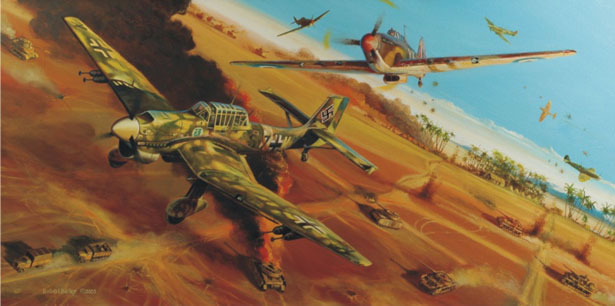 from a painting http://airplanesandmore.com/proddetail.php?prod=RB-Desert |
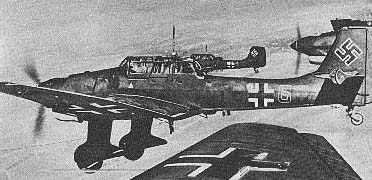 Geschwader Immelmann Stuka's |
Early in February we were ordered to transfer to
Tripoli, North Africa. The Italian Army had been defeated, a motorized
British advance force had already reached El Agheila south of Bengazi,
on the Great Syrthe Bay. General Rommel was being expected in Tripoli
where he would set up a new army from German and Italian units; an army
which was to-dislodge the enemy again from Libya and Cyrenaica. One morning General Rommel landed in our camp in a Fieseler "Storch" plane, to find out in which way we could support him while he gathered his army in the Tripoli region. He told us that it would take him six weeks at least before he could move into battle. Until then we were to get the British off his back. In Berlin he had been assured that the two Gruppen of our Stukageschwader would master that task. For us this was, of course, a grave commitment. Before leaving us Rommel said that he wanted us to act quickly, to stop the further advance of the British. To us this meant an attack against the armored spearhead in El Agheila. |
|
Our I/Stuka 1 had the honor to fly the first sortie in North Africa. A sandstorm came up. The Commodore did not insist on our take-off. On the other hand, Rommel's situation was most precarious. I consulted with my captains. We decided to risk the instrument flight. The motors were fitted with dust filters. All of us were trained in blind flying. The Ketten took off at intervals of one minute. Only after we had climbed to an altitude of 2,000 meters was our visibility clear. Forming up, we started on our 500-km approach to the target. On our flight we made a wide detour to the south because we felt sure no one would expect us from that direction. We knew that in Bengazi fighter planes were stationed, presumably also a small detachment of them in Agedabia, not far off El Agheila, our target. They would not, we hoped, intercept us because we flew without fighter escort. The sun was high up in the sky when we dived, like birds of prey, from 5,000 meters altitude on the British outpost on the Great Syrthe. Our bombs whirled up a lot of dust, that's all we could see. No visible defense by AA fire could be noticed. All the same we lost one of our crews. On our return to our Bir Dufan camp we were enthusiastically received. The Italian radio interception station had listened in to the report of the Chief of the British High Command in Agheila, saying that more than 40 armored scouting cars had been destroyed in our sortie. It was the first successful counterblow General Rommel had expected from us. The next attack was flown by Major Enneccerus and his II/Stuka 2 while we flew the 800 kms back to Trapani to pick up new bombs. Our ammunition supply did not function at that time. The distance to be covered in either direction was 1,600 kms. The next day when our attacks were to be renewed we had to cover another 1,000 to 1,200 kms. We thus proceeded in turn for a number of weeks. In the last sortie flown by my Gruppe against a British division advancing south of Bengazi, which we had attacked in low-level flight, we lost five planes in a surprise attack by "Hurricane" fighters. |
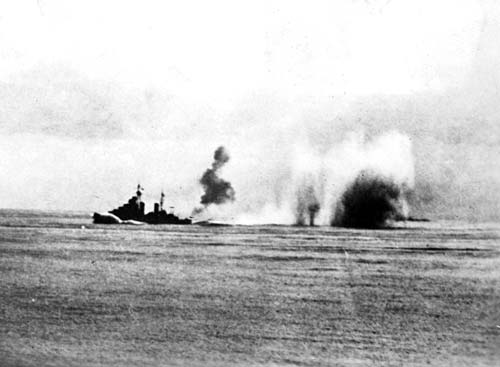 HMS Dido off Crete being attacked by Stuka's and below Stuka in formation attacking Crete |
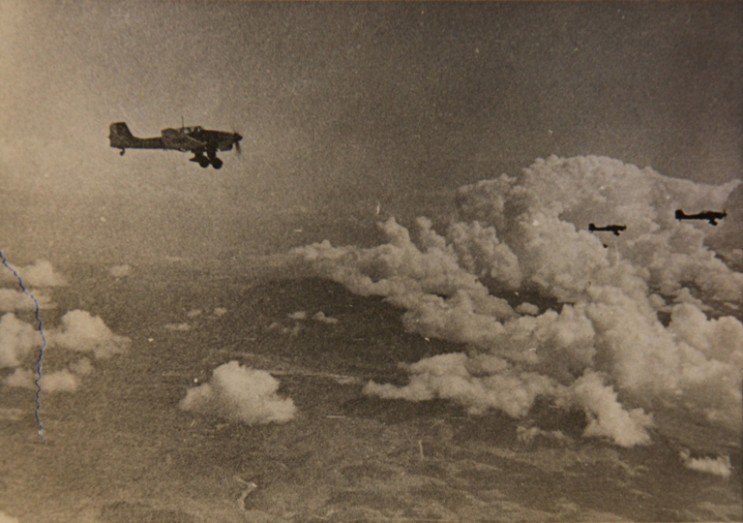 |
At the end of September I received from General von Richthofen a telex informing me that I had been promoted, with effect from 1 October 1941, to the post of Commodore of the Stuka Geschwader "Immelmann" (StG 2). I returned to my old Geschwader where I had served as Oberleutnant in 1937/38. To myself, the young 31 year old major, it was an unheard of mark of distinction which made me almost feel slightly uneasy. The Geschwader had pinned much glory to its colors in the campaigns against Poland, in the West, in the Balkans and the Battle of Crete, particularly since the beginning of war against Russia by the destruction of the Russian Navy in Kronstadt. Some of the crews could look back to some hundreds of sorties. In addition, a number of officers had received the Knights Cross in recognition of their outstanding bravery. One thing was clear to me. A severe standard would be applied to the new commander. A young unit commander was supposed to be an excellent pilot capable of guiding his unit in the air, the first in combat, and the last to disengage from the enemy—like the Prussian cavalry commander at the time of Frederick the Great leading his regiment into battle with his sword drawn. No leader of a flying unit could gain recognition from the troops under his command except by setting an example in action, and by his own morale. This was the spirit handed down from Prussian-German history, taken on by the Reichswehr and passed on to the Luftwaffe by the young generation of airmen trained by Reichswehr officers. It was this spirit that lived in the Immelmann Geschwader. The mere name of the famous fighter ace of World War I was a pledge, an obligation. Strictest discipline was observed. Oberst Dinort, then 42 years old, and two young Gruppenkommandeure did not tolerate any negligence in behavior, dress, or anything related to discipline. It was the style in which I had received my training as Fahnenjunker (officer cadet) in the 2nd Prussian Artillery Regiment. |
|
After a short briefing I officially took charge of the Geschwader on 16 October. It consisted, at that time, of I and III. Stuka 2 was to be organized in the winter in East Prussia. The Battle of Wjasma bad been fought and the German armies were advancing to Moscow. At that time the Geschwader had about 70 JU-87s, operationally ready, which was 70 percent of the required strength of about 100 aircraft. The advance of the Army had made comparatively rapid progress. The air transport units were very busy supplying spare parts for planes and motors which, with the technical equipment available on the front, were overhauled for new combat sorties. Subsequently, a number of airplanes had to be withdrawn from service and taken back to the repair hangars at home because of necessary overhauls of airframe and motors. That took much time. The supply lines became longer the more the lines advanced to the East. As in the previous campaigns, the Geschwader was subordinated to the Eighth Air Corps commanded by General von Richthofen who, because of his outstanding achievements, had been promoted to Generaloberst, a four star general. At that time he had under his control one Stuka Geschwader with JU-87s, this was mine, one fighter bomber Geschwader with HS-123s, one fighter Geschwader with ME-109s, one bomber Geschwader with JU-88s, a long-range reconnaissance squadron, a short-range reconnaissance squadron, and, also, telecommunication and logistics support. The headquarters were actually under the command of Luftwaffe 2, which was an army level, at Smolensk headed by Fieldmarshal Kesselring, but had much freedom of action in decisions about which sorties were to be flown in support of the army and the destruction of Soviet supply units near the front line, such as movements of troops and supplies by railroads and highways. The first sorties under my command began. Then we come to the situation as it was in front of Moscow in the lace fall of 1941. The Geschwader had transferred to the area east of Wjasma. |
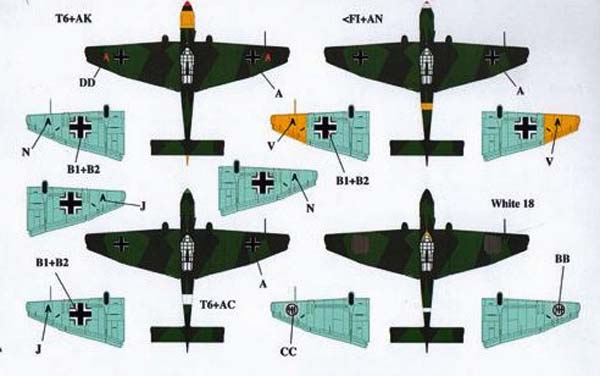 Stuka colour scheme Russia 1941 |
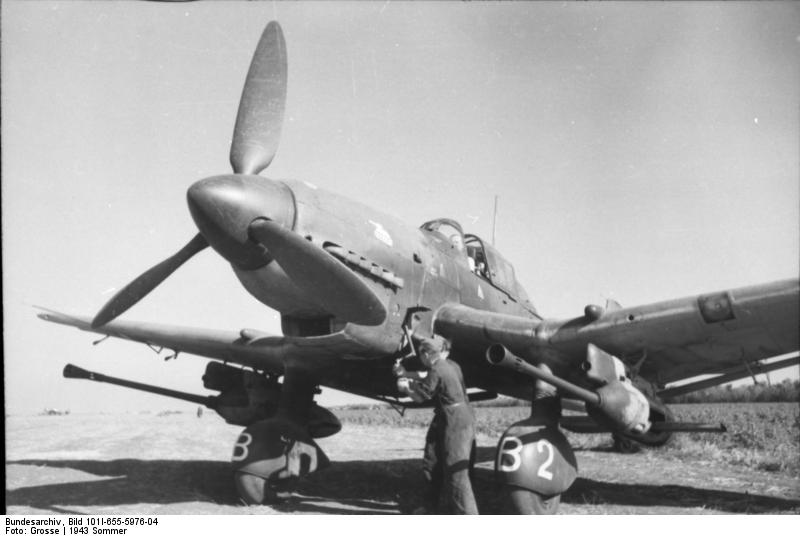 German Ju 87 Stuka dive bomber at rest, Russia, summer 1943 mechanic Hans-Ulrich Rudel was using a hand crank to start the engine |
Let us return to the situation as it presented itself on the Moscow front in late fall of 1941. The Geschwader had transferred to the village of Kuleshevka, east of Wjasma. The German troops were still advancing. A number of armored units had already crossed the Moscow-Leningrad railroad line near Kalinin. In coordination with the other units of the Eighth Air Corps, the Stuka Geschwader "Inanelmann" supported the army units by bombs and fire from aircraft weapons against Soviet defense forces who fought a delaying action, trying to stop the German advance. The operation orders from the Corps were directly phoned to me or the Geschwader adjutant by the Deputy Chief of Staff of Operations the Chief of Staff, or by the Commander himself, in accordance with maps at a scale of 1:300,000, and in dependence on a grid square system. This was mere routine between Corps and Geschwader Target according to grid square, ammunition load, number of aircraft to be employed, time of attack. The latter was fixed only if it was to be synchronized with the ground attack. Normally, the sortie was to be flown as soon as possible. As a rule we had the following ammunition available: 500-kg bombs with and without tank busting
heads, The normal ammunition load comprised: One 500-kg or one 250-kg bomb below the fuselage
and The Geschwader made, in the first place, sorties against troop concentrations and against troop movements on railroads and roads. We also attacked gun emplacements. At that time tanks appeared in isolated numbers only, in small packs, just to harass the advance of our troops. The weather was still quite dry in October. In November, rains set in and the mud season began. This greatly retarded and finally seriously endangered the advance to Moscow, also our logistics. |
|
In November the Geschwader rushed forward, transferring to Gorstovo, a small town on the Moscow River. 10 kms north of Moshaisk, about 100 kms west of Moscow. The spearheads of the army units had reached the western suburbs of the Capitol, and our soldiers were for the first time able to see Moscow streetcars standing at a terminal station. All of us were still sure of victory, even somewhat overbearing, not knowing what kind of winter was ahead of us. Our Generaloberst hovered in his Fieseler "Storch", equipped with a radiophone, over the Russians as though they were flocks of sheep, directing single Stuka and Schlachtflieger units to targets spotted by him. With a fabric-covered and slow courier airplane, the "Storch", he showed a boldness which bordered practically on foolhardiness. He was lucky though, and never received a direct hit on his solo flights. He would get away every time. The news of their general's boldness and bravery soon made the rounds among the units. He was a shining example to all of us. His courage carried us along; every pilot did his utmost. Every day Richthofen called on his units in his "Storch", unannounced. It was his way to keep the unit commanders, Kommodore and Kommandeure, on the alert. By the end of November the weather had turned wet and cold, but there was no snow yet. I was just returning from a sortie with a number of planes, in the region east of Kalinin. Having made an intermediate landing for refueling on the Russian air base of Kalinin—then controlled by the Germans—I saw some Russian tanks approaching the field and opening fire. Unfortunately we had no bombs left to defend ourselves and had to take to flight in all haste. Shortly after, having landed at our Gorstove adance airfield, I learned that Richthofen had just arrived there. Listening to my report in the best of spirits, he finally told me, "I expect the Kommodore of Stuka Geschwader 'Immelman' (meaning myself) to land with a Stuka Kette on Jaroslavl airport and to occupy it the moment our first motorcycle riflemen infiltrate the town". The town named is situated in the Volga bend, 300 kms north-northeast of Moscow. This goes to show that even at that juncture a high commander of the Luftwaffe took quite an optimistic view of the situation! In giving this order, Richthofen wanted to demonstrate quite openly the excellent cooperation between Army and Luftwaffe. He wanted to make it clear that the units of the Eighth Air Corps would at any time operate at the foremost front, before the spearheads of the Army. This should strengthen the confidence of both the Army and the people in Germany in the fighting power and the quick power of reaction of the flying units. |
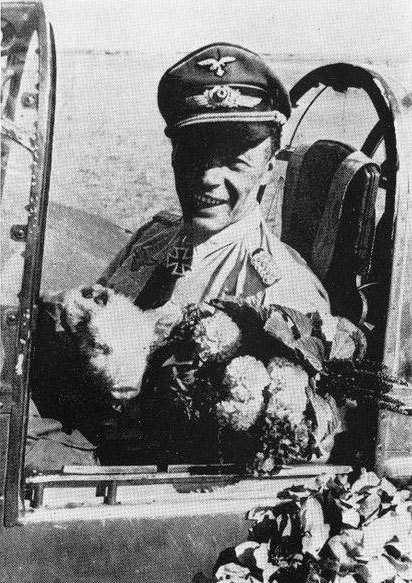 Dugino is a town in the Kurskaya Oblast' region of Russia. I was very lucky to find this image of the main speaker on this page - Obstlt Paul-Werner Hozzel when with Immelmann 6 Oct 1941 - 13 Feb 1943 |
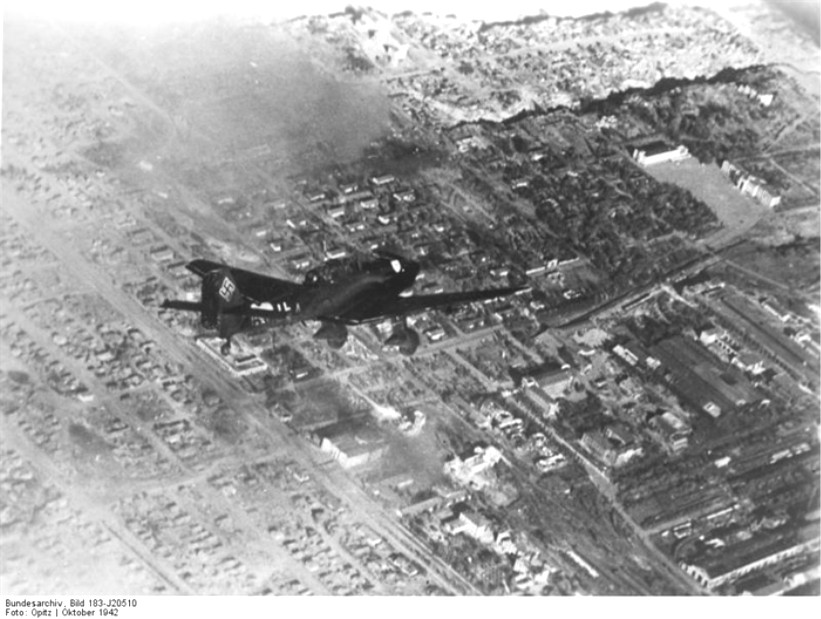 Stuka over Stalingrad October 1942 |
Then, all of a sudden, Russia's "General Winter" came over us. It was getting colder and cooler, the mud froze, vehicles got stuck and could no longer be moved in any direction. It started snowing. The units of the Eighth Air Corps had to camp, unprotected, on the ice-coated open fields in front of Moscow. The advance of our troops came to a halt. It soon changed into a Napoleonic retreat, as we could recognize from the air during our last sorties in the Moscow area, much to our dismay. Our Geschwader could get only a small number of planes into the air per day. The preheating units for the engines had got stuck in the frozen mud far behind our lines. We gathered wood, preheating the engines over open fires to get them started. The fighting capacity of the Geschwader rapidly declined. The most urgently needed spare parts for motors and airframes were flown in by JU-52s. The other units of the Corps were handicapped too. The Soviet Air Force was given an unheard of chance to inflict a crushing defeat on the concentrated German Army and Luftwaffe units, unable to move as they were. Oddly enough, practically nothing happened, although the Soviets had their planes stationed in heated hangars around Moscow and could have taken off to attack us several times a day. To us it was a miracle. In can, in fact, only be explained by the inefficiency of the Russian Air Force Command, a state of affairs we could observe practically throughout the Eastern campaign. I would, however, warn against negative conclusions from this about the modern Soviet Air Force. For more than 30 years it has had time to learn from its failures in World War II. I am sure it has learned its lessons. The same applies to the Soviet Navy. In the extensive forest regions north and south of the Smolensk- Moscow highway, it teemed with scattered Soviet troops and partisans who were a constant threat to the German army units withdrawing in the direction of Wjasma. Nothing but the highway itself was under German control. It could only be kept open with great difficulty. |
| For the Geschwader "Immelman" it was now high time to think of its transfer to the west. Newly formed Soviet units pressed forward in the direction of Moshaisk and so threatened the unit bases of the Eighth Air Corps whose fighting power had been reduced to practically zero because the supply of fuel, ammunition, and spare parts was interrupted. We just had to wait tor a change in the weather which would allow us to get our unit of about 40 airworthy planes into the air. On 24 December 1941 our time had come. Richthofen ordered our transfer back to the temporary air base of Dugino, immediately west of the Wjasma-Rshev highway and 30 kms north of Wjasma. The temperature was about freezing point, light snowfall set in. On our flight it was extremely difficult to distinguish the snow-covered ground from the white-grayish haze of the sky. It was in fact, IFR weather. The trouble was that our JU-87 was not equipped for blind flying. The aircraft was, in fact, fitted with IFR instruments for flying through layers of clouds but could not be directed via radiophone. The JU-87 was merely equipped with a radiophone (FuG 7) by which inter- aircraft communication and radio communication with a ground station was possible over a distance of 80 kms. Beyond that the ground station could address the Geschwader or respond to it in the air up to a distance of 200 kms without knowing, however, whether it had been heard. This offered at least the chance to divert a unit in the air to another objective whenever the situation had changed during the approach flight. In this way the attack of I/Stuka 1 against the Brest-Litovsk citadel could be stopped in the last minute during the Polish campaign after it had already been taken by our troops. We were, consequently, left to our own resources in visual flight. Even in very bad weather we had to depend on our skill in locating our aims by flying closely above the treetops. Flying in Russia was, moreover, made more difficult by the fact that maps available often did not check with geographic realities, a most dangerous and irritating situation. When visibility was poor, we followed the run of railroad lines, highways, and waterways, putting up with detours. We were confronted with such weather conditions on that Christmas Eve when we transferred to Dugino. I ordered flying in Ketten with the express order to be guided by the Moscow-Wjasma and Wjasma-Rshev railroad lines so that no one should get into danger in bad weather. When we landed at nightfall in Dugino, seven planes were missing. We never saw them again. The commander of a Schwerm had obviously ignored the order to use the railroad lines as a navigation aid. This made him lose visibility in the snow flurry. He made ground contact and was wrecked with all the planes following him. It was a sad Christmas Eve. The distressing idea of our troops in retreat weighed upon all of us in Dugino. For the first time we were seized by the thought that this might be the beginning of a disastrous end. A comparison with Napoleon's army simply suggested itself to us. History repeats itself. |
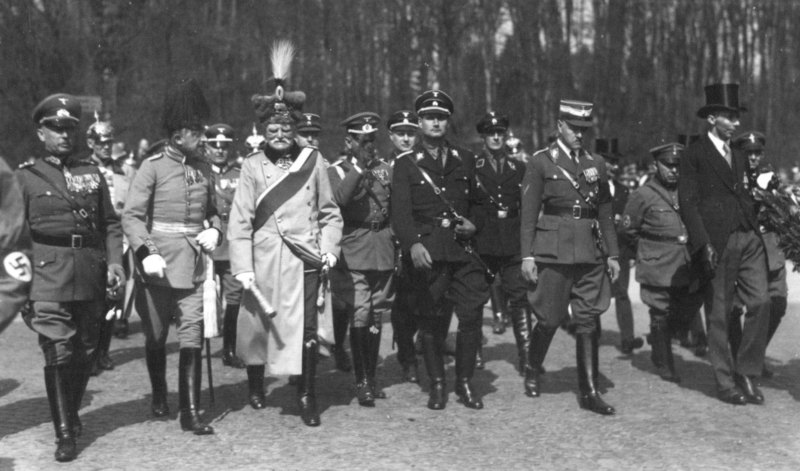 Image had written on rear General Schroder on airfield Dugino Russia |
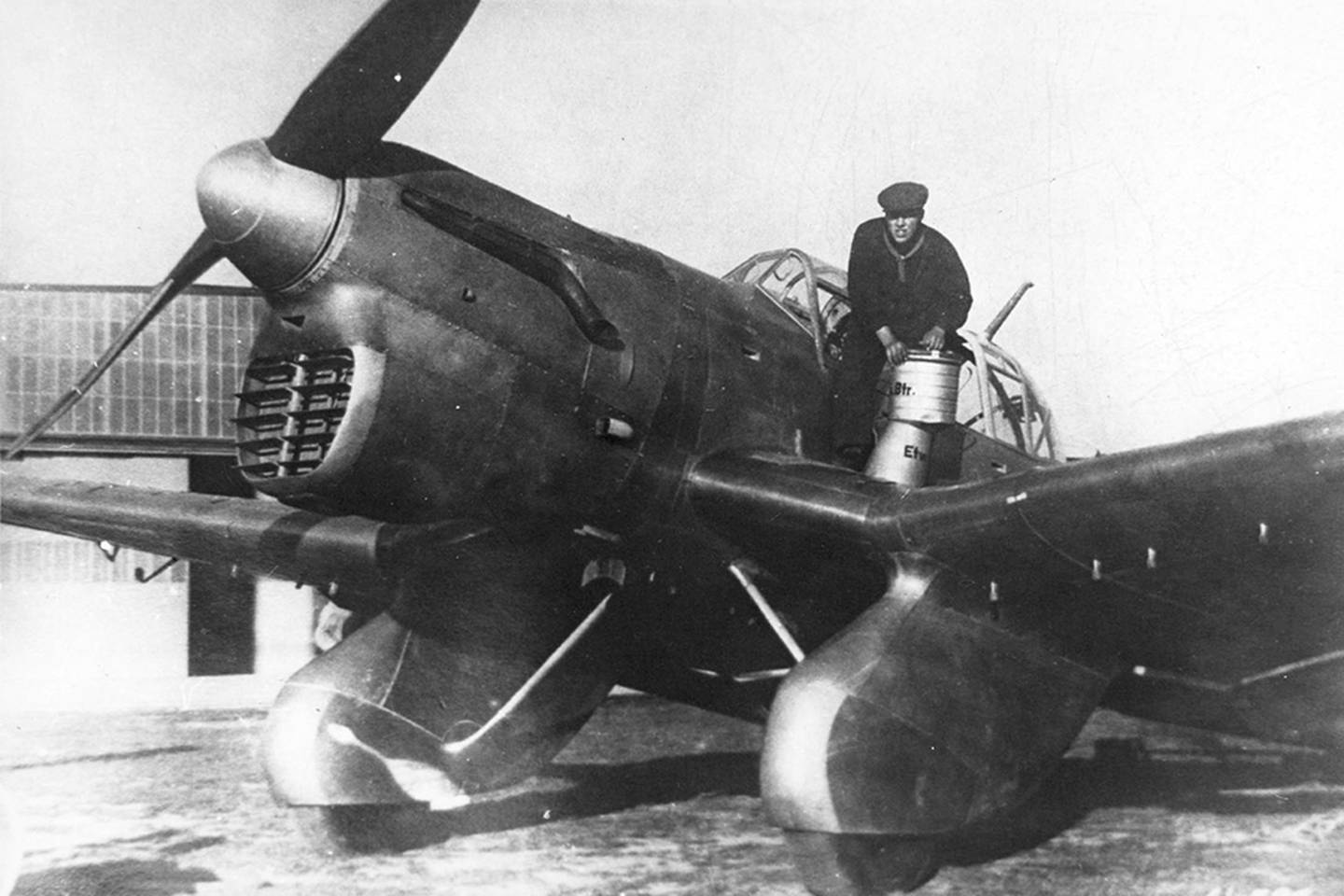 The Stuka was only effective when operating in an area of air supremacy |
General Hozzel is talking about combat in Russia from about October-November-December 1941 and something that is interesting is wintertime operations, and he has been talking about operating at 58 degrees north latitude in fairly cold temperatures. Something I think you will find interesting is that the winter of 1941-42 in the Soviet Union and in central and eastern Europe—from information that has come to light—was probably the coldest winter in the recorded history of Europe, and that history goes back to a weather-keeping station in Holland for about 240 years at that time. Now it is 2-3/4 centuries. Something that is interesting is that the weather they faced was probably the worst in a quarter of a millenium in Europe. Now, there is a mass of scientific data that show this beyond too much doubt. Any conditions that they faced should be caveated by the fact that this was an extraordinarily cold winter. The Soviet Union in that particular winter was much colder than it should have been, and it was a lucky break for the Soviets that it was so bad and that the Germans were slowed down that much. The average temperature of Moscow in January—for 69 years at that time—was 18 degrees above zero Fahrenheit. That means that on an average day the temperature would go up to 25 and drop perhaps to 13. For the January of 1942, the average temperature was 9 degrees. The Germans were caught by an extraordinarily bad winter. The interesting thing is that they managed to survive not too badly the worst winter in the recorded history of the European area. There may have been worse winters 500 years ago, but nobody had the recording instruments at that time. There is anthropological evidence that about 500 years ago the Baltic froze over for a couple of years and wolves came down from Scandinavia and ate people in the north German villages. Nonetheless, the winter of 1941-42 was exceptionally bad. |
|
From what was left of the Eighth Air Corps, "Combat Unit Dugino" was formed under my command. The unit now consisted of about 30 JU-87s, 20ME-109s, and one reconnaissance Staffel. From the east and north the enemy brought pressure to bear on Rshev. We flew nuisance flights from morning to night, attacking Soviet troop movements and gun areas with bombs and aircraft weapons all the time. Our targets were marked via radiophone by air liaison officers in the front line or by ground signals given by the troops. Our attacks took place in Ketten by slant range dives. We dropped our bombs from altitudes of 500 to 1,000 meters. Each plane, attacking three to five times at least, released its splinter bombs weighing 50 to 500 kg and fitted with impact fuses. Each sortie was concluded with precision fire from its aircraft weapons. Thus we kept permanent contact with the enemy, by two to three Schwaerme, alternatingly by five to seven aircraft, while the other planes were refueled and loaded with ammunition on the ground. In Dugino the units were supplied again in the usual way. Heating devices were available. There was no shortage of ammunition, fuel, or rations. In spite of most strenuous efforts of the Army fighting delaying actions, a Russian armored spearhead succeeded in reaching the environs of Dugino and threatened the air base. All sorties were now made "on our own account", to hold the airfield. Our sorties were short, lasting not more than 15 minutes as a rule. We started, attacked, landed, loaded, and took off again. Some of the Russian tanks had advanced almost to the fringe of our field but were warded off by antitank guns (PAK) and heavy AA fire. Thanks to the excellent teamwork of all available forces of Army and Luftwaffe, it was possible to beat off the foe. Dugino was saved. |
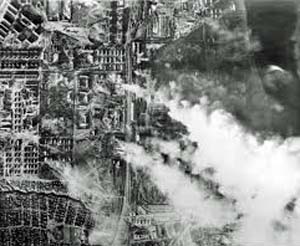 Stalingrad |
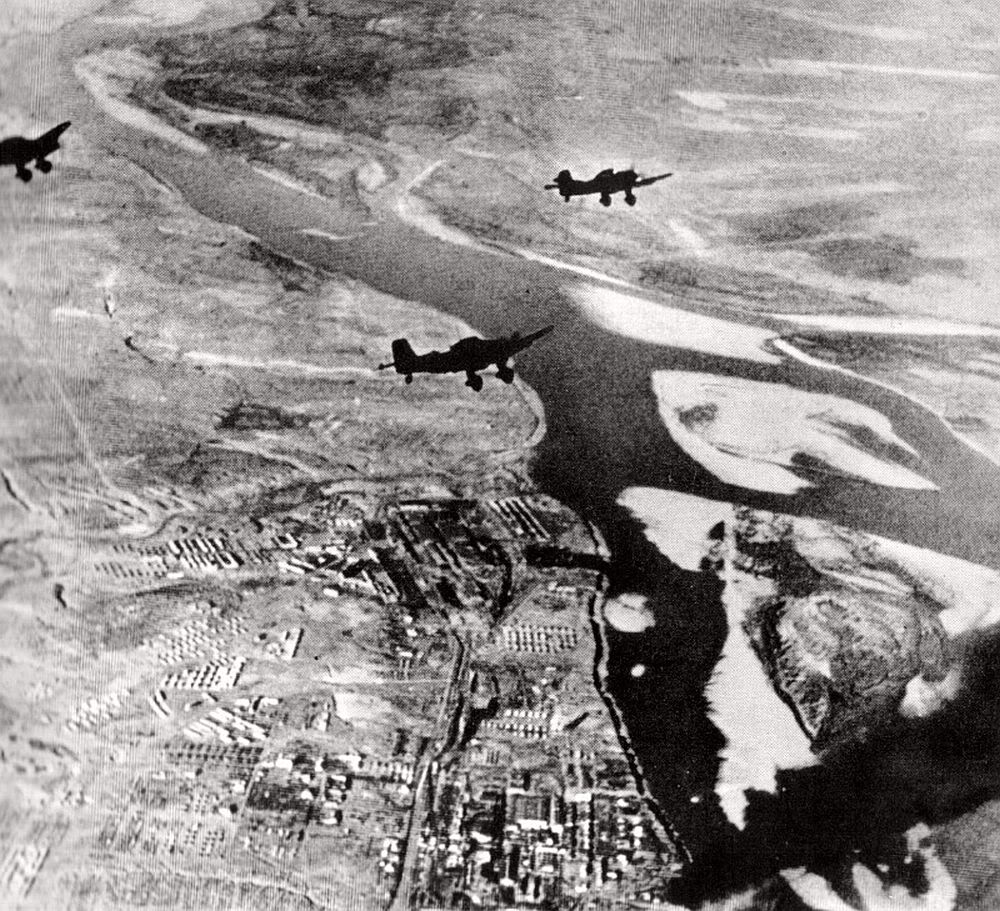 |
Gentlemen, I will try to give you some examples of the situation in the Battle of Stalingrad, to give you a picture of the situation in late summer of 1942. My Geschwader were on emergency fields in the Russian steppes—out on a plains landscape, no trees, no bushes. In the neighborhood were other units of the Eighth Air Corps, under whose command ;ve were at that time. There was fighter Geschwader "Udet", there was a close air support Geschwader with Focke-Wulf 190, and a level bomber Geschwader. This was the operational power we had under the command of the Eighth Air Corps at that time. The task was to give support to the Sixth Army thrusting in the direction of Stalingrad. At that time this thrust had come to a stop because of the River Don which runs parallel to the Volga River, building a kind of isthmus between the Volga and the Don. On the Don River was situated the town of Kalach. The Soviets, knowing our intention to take Stalingrad, had put up a barrier on the West bank of the Don, in front of this town. This barrier consisted of 200 to 300 tanks, and it was the first time we came in contact with such a mass of tanks. The Soviet resistance had clearly stiffened here. Apparently it was intended to delay the German thrust at Stalingrad as far as possible. The Sixth Army was therefore bound to attempt a breakthrough of the tank position with close air support to be able to cross the Don and push on to Stalingrad. Thus the tank battle started the Geschwader Immelman encountered for the first time a large concentration of tanks. We saw many packs of T-34s, also some older types. The fronts between friend and foe were clearly discernible. It would have been pointless to attack in large groups because our planes would have hindered one another. Instead we detailed one Staffel after another. They approached single tanks in Ketten and from the side, from south to north or vice versa. Each plane looked for its target, flying parallel to its neighbor, at approach angles of 30 to 40 degrees, aiming with the whole aircraft through the reflex sight, at the center of the tank, then dropping 500-kg bombs with tank busting head into the tank's side while making an extremely low pass above the ground. Flame- bombs also proved to be most effective because due to the heat developing the crew was incapacitated while the fuel container of the tank exploded. It was, of course, imperative to react rapidly, to pull up the plane in a split second after bomb dropping, flying across the tank so as to avoid being hit by the explosion of our own bomb. It sounds adventurous but that's exactly what it was. Later, a better method of tank killing was devised. The JU-87 was armed with two 3.7-cm cannons below the wings which led to great successes. In the Kalatch tank battle it was our tactics to keep one Staffel of 9 to 12 planes constantly in touch with the enemy. Whilst one Staffel still pressed home its last attack, the one following was approaching the target area. Thus the Russian tank forces, being unrelentingly harassed from the air, could not fully concentrate on the ground situation and the fighting of German tanks. When the crew of a single enemy tank saw itself attacked from the air, it immediately started curving so as to avoid the attacrer. In doing so it was, of course, unable to fire against our tanks. Seeing that any Soviet tank must have felt attacked along the whole width of our offensive front, our tank hunting strikes had quite obviously a paralyzing effect on the firepower of the enemy tank force. I should not fail to mention here that among the Russian tanks there were also antiaircraft tanks we had to watch out for. We could easily identify them by their vertical barrels. It goes without saying that they were the first to be attacked by us. Yet, there were some of them who fired from camouflaged positions not made out by us in time. Still they scored no hits because of the angular velocity of our JU-87s attacking at a slant dive angle. The speed of our planes was too high for their cannon to follow it. |
|
The tank barrier near Kalach was finally pierced in a combined effort of Army and Luftwaffe. The way to Stalingrad was open. Within one day only the German armored divisions crossed the Don on a wide front, rushing forward across the isthmus—being about 60 to 80 kms wide—to their strategic aim of Stalingrad while steadily receiving close air support from Stukageschwader "Immelman" and Schlachtgeschwader 1. In the evening of the same day the Supreme Command of the Sixth Army was able to report that its armored spearheads had entered Stalingrad from north and south. The Germans felt sure of victory. 3ut soon it was realized that a tough struggle was ahead. The Soviet Supreme Command was, like ourselves, well aware of the decisive importance of the Battle of Stalingrad for the outcome of the war. It was therefore determined to hold it, come what may. Day and night new forces were brought up from the depth of the vast Soviet territory east of the Volga. By daylight we could see from the air the clouds of dust accompanying the columns of approaching relief troops of the Red Army, crossing the river at night on simple pontoon bridges and infiltrating into the immensely large area of factories and dwelling units of the city which was, in fact, transformed into a labyrinthine fortress. Heavy fights broke out for each block of apartment houses, each courtyard, each factory ground, workshed or cellar. There were serious losses on both sides. The Soviet Supreme Command could, at the Stalingrad front, rely on an immeasurable reservoir of manpower, and drew on plentiful resources of men and material from regions free from any enemy. The manpower reserves of the Germans were, at that time, practically exhausted. Their supply lines, extending over 2000 kms, passed through partisan territory. Germany had her troops fighting on four fronts. The Soviet Union, on the other hand, having to defend one front only, received logistics support by the convoys of the Western Powers via her ice-free port of Murmansk and obtained all that was needed for the preparation of a large-scale counterblow. |
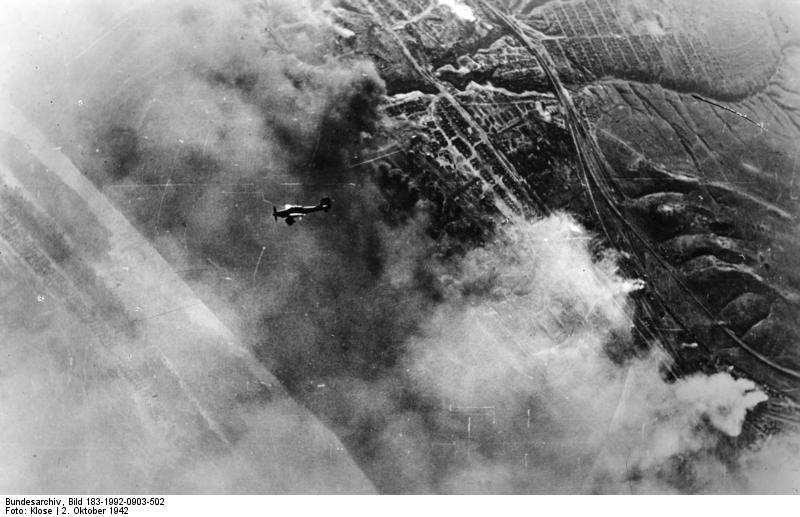 October 1942 Stalingrad |
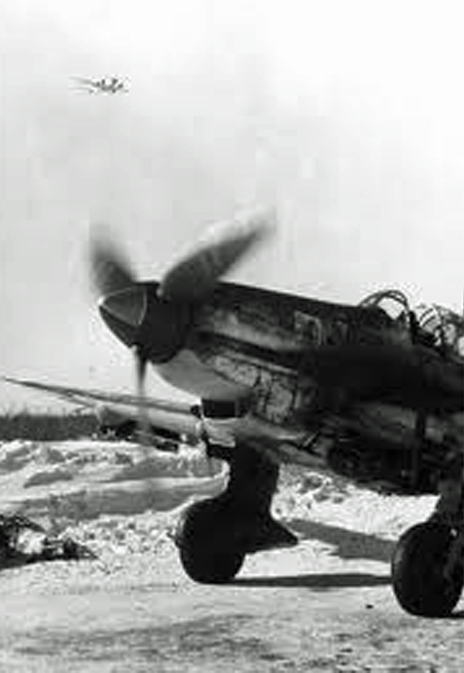 |
I said the Soviet Union received logistic support by the convoys of the Western powers. This is the explanation of how they could build themselves up so strong as they did in that time. The Balkan campaign, originally not taken into account by the German command, and the Crete operation; what a decisive loss of time, men, and material for the campaign against the Soviet Union, which had originally, and rightly, been planned for the beginning of April 1941. The loss of those three months, gentlemen, decided the Battle of Moscow, and then we were in front of Stalingrad. To make the situation worse, a severe winter was ahead of us, similar to and perhaps worse than in the Battle of Moscow. The Eighth Air Corps had meanwhile transferred its units to the region between the Don and the Volga. Geschwader Immelmann took off from an airfield 40 kilometers away from Stalingrad. Our operational readiness had been reduced to 60 percent. The logistical man was haunted with many problems caused by the increased activities by partisan groups in the territories occupied by our army and through which our lines of communication passed. We heard of railroad tracks being torn up by explosives day after day, and of the troublesome repairs. We also learned that transport columns could no longer move along without being protected by strong convoys. Meanwhile, the partisans had organized themselves in the deep forests. They were under the command of active officers of the Red Army who were landed by plane or at night jumped by parachute. By the middle of October, the weather had become noticeably cooler, yet it was dry and not really cold. In spite of the obstructions of our supply routes, our logistics support was on the whole satisfactorily maintained. The units of both the Sixth Army and the Eighth Air Corps were supplies with all they needed, though they could no longer draw on plentiful resources. In order to support the army in its strategic struggle for the final occupation of the city, reconnaissance planes had prepared an aerial mosaic which each pilot had in front of him in his cockpit when flying sorties against targets in Stalingrad. Likewise, each aviation officer in the spearheads of the divisions had that aerial mosaic map with him. A system of coordinates plotted on the mosaic enabled the aviation officer to indicate co the commander of the approaching Stuka unit by radio phone exactly every target and to direct him to it. Throughout the battle for the city this kind of cooperation was excellent. As I said before, a distance of only 40 kilometers separated us from Stalingrad. This meant that we needed for each sortie a chock-to-chock time of not more than 45 minutes, which included taxiing to the start, takeoff, approach flight, the climb to an altitude of 4,000 meters, target pickup, dive bombing attack, low level flight departure, landing, taxiing to the apron. Each turnaround—a new loading, a short technical overhaul, checkout-took us another 15 minutes. We were consistently able to fly with each plane about eight sorties from sunrise to sunset. On some days we managed to fly a total of about 800 sorties, as I already mentioned. This was a great feat of our crews bringing effective aid to our army units in their hard struggle against an enemy gaining in strength all the time. Every minute of the day we kept the enemy on the go with Stuka combat fighter plane attacks, continuously harassing him from the air. With our dive bombers, we had first started attacks by diving on the Russians from high altitudes with our sirens hooting incessantly, thinking this would shatter their nerves. Soon, however, we stopped these tactics when we realized that Russian ears were indifferent to those acoustic irritations. Obviously, their nerve structure was much stronger than that of Western people. Here again, I should say a few words about Soviet air defense. For the protection of his troops in Stalingrad, the enemy had a massive antiaircraft arrangement on both banks of the Volga River; also in the city sections occupied by him. They fired at us with all calibers at their disposal, inflicting heavy casualities on us. Most dangerous to us were their medium 20-mm and their larger 40-mm antiaircraft, which at times caught us in dives at altitudes between 800 and 500 meters. Even their heavy antiaircraft guns fired quite accurately to altitudes of 4,000 to 5,000 meters. It is a fact that the Geschwader in its sorties on the Eastern Front, particularly over Stalingrad, suffered its most severe losses by antiaircraft fire and hardly by Soviet fighter planes. Various of our pilots and their backseaters actually succeeded in shooting down Soviet fighters in the attack. We should not forget that Jagdgeschwader Udet and close air support Geschwader 190, also employed as fighter units, had full air supremacy in the Stalingrad area after having decimated Russian fighters and interceptors. Apart from the Russian antiaircraft guns, we had to deal with another, invisible, though just as dangerous, enemy of our deep diving Stukas. I refer to the trajectories of the artillery projectiles thrown at us from both sides, and which we crossed while pulling out of our dives and on departing. It sometimes could not be determined whether it was an antiaircraft or an artillery projectile that had torn up a JU-87 in the air. |
| The month of October 1942 passed week by week without the Sixth Army being able to break Soviet resistance in the center of Stalingrad. To make things worse, the fighting power of the enemy, while being far from slackening, was aven getting stronger and stronger from day to day. I will here report of a sortie we flew with about 120 JU-87s against a special target in the center of Stalingrad, It was the ruins of a giant production plant in the basement of which the Russians had so firmly entrenched themselves that there was no getting at them frcm the ground. The only chance to drive them out of their underground position appeared to be a mass Stuka attack. The plant extended from west to east for a length of about 1,000 meters and a width of 50 meters. In the north, the west, and the south, it was closed in by our infantry, but it was open to the east which was enemy territory. The stiffened resistance of the Soviet combat force stuck like a painful thorn in the side of the German divisions operating there. They could steadily be given logistic support from the east. Generaloberst von Richtofen, the commander of the air force in that area, made us understand that our Geschwader had to do precision bombing so as to avoid danger to our troops entrenched close to the target area. |
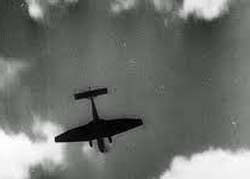 |
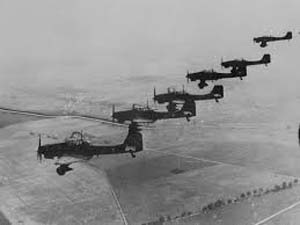 |
He wanted to watch our sorties, judge the accuracy of our pilots, from his commandpost at the western outskirts of the city. This was indeed a very delicate order. We could not risk making a dive bombing attack from 4,000 meters altitude because of the wide area of dispersion. We had to fly a slant range attack, releasing the bombs directly over the roofs. We had to push the bombs into the target like loaves of bread into an oven, with one plane succeeding the other. We loaded each plane with one 500-kilo bomb with a tank-busting head and delayed action fuze for piercing the roofs. Each plane also carried two 250-kilo bombs under the wings, so each carried a load of 1,000 kilos. Each pilot was fully briefed in accordance with the aerial mosaic mentioned and informed about the sequence of the attack. It was planned to drop the bombs in rapid succession so as to wear down the enemy by endless detonations. The order of the attack was accurately fixed. The Geschwader assembled at altitudes between 1,000 and 2,000 meters in a holding area west of Stalingrad outside the antiair range without fighter escort. From there the individual Staffeln started their slant range approach in the sequence ordered. The Staffskette, having signalled the attack, started first and dived on its target, dropping its bomb from a very low altitude. Then, pulling our planes around, we left the antiair range in low level flight, gaining altitude west of the city so as to observe the attacks of the planes following us. As on a string of pearls, one plane followed the others within an interval of a few seconds, throwing the bombs on the oblong target area divided up among us. Not one single bomb missed its target. This brought our crews high praises by the infantry in the target area. But what was the result of the whole operation? It was next to nothing. When the division resumed its attacks in order to test the effects of the bombing raid, it unexpectedly met with fierce counterattacks as though nothing had happened; as if the Geschwader had dropped toy torpedoes instead of bombs. |
|
I want to end with a few words
about Stalingrad. At that time, before the final closing in of the Sixth
Army, the German Supreme Command still seemed to be quite optimistic. In
view of the Soviet supply columns reaching Stalingrad from the north and
the east, week after week, some of us were seized with a feeling of
depression. On the one hand, the Sixth Army seemed to be quite intact. On
the other hand, why did the Sixth Army not take the remaining third
section in the center of the city? Somehow, its strength seemed to
weaken, though this was only natural after all the experience of the
last four months. Reinforcements of tanks, fuel, and ammunition had
slowed down. The reasons for this were obstructions caused by partisans,
as already mentioned. With the allied Italian and Rumanian units
protecting the flanks, would the army be in a position to withstand the
Russian counter offensive now obviously in the offing? Those familiar
with the situation had their doubts because two allied armies were not
backed up by an adequate number of armed forces. To make things worse,
winter was near at hand. So came the end. Today we know the prescience
of imminent disaster would come true, even surpass all expectations. I
do not want to repeat the reports on the German debate in that battle
deciding the outcome of the war. The Geschwader Immelmann flew out the
mass of its ground crews from the pocket by transporting them in the
wings and rear cockpits of the planes. As many as about 700 men were
ordered to be left behind. They were integrated into the Luftwaffe Field
Battalion Immelmann. We never heard of them again. In the ensuing fights
for the relief of the Sixth Army, our Geschwader lost a number of battle
tested Staffelkapitanen and many a brave crew who had distinguished
themselves in hundreds of sorties. Most of them were killed in action in
low level flights over enemy territory, in bad weather, by camouflaged
Russian antiaircraft batteries. Speakers were a General Hozzel and a Dr Stolfi |
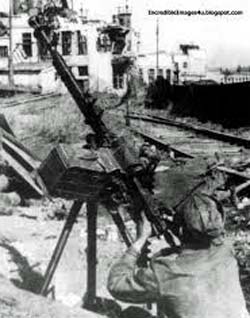 AA guns Stalingrad 1942 |